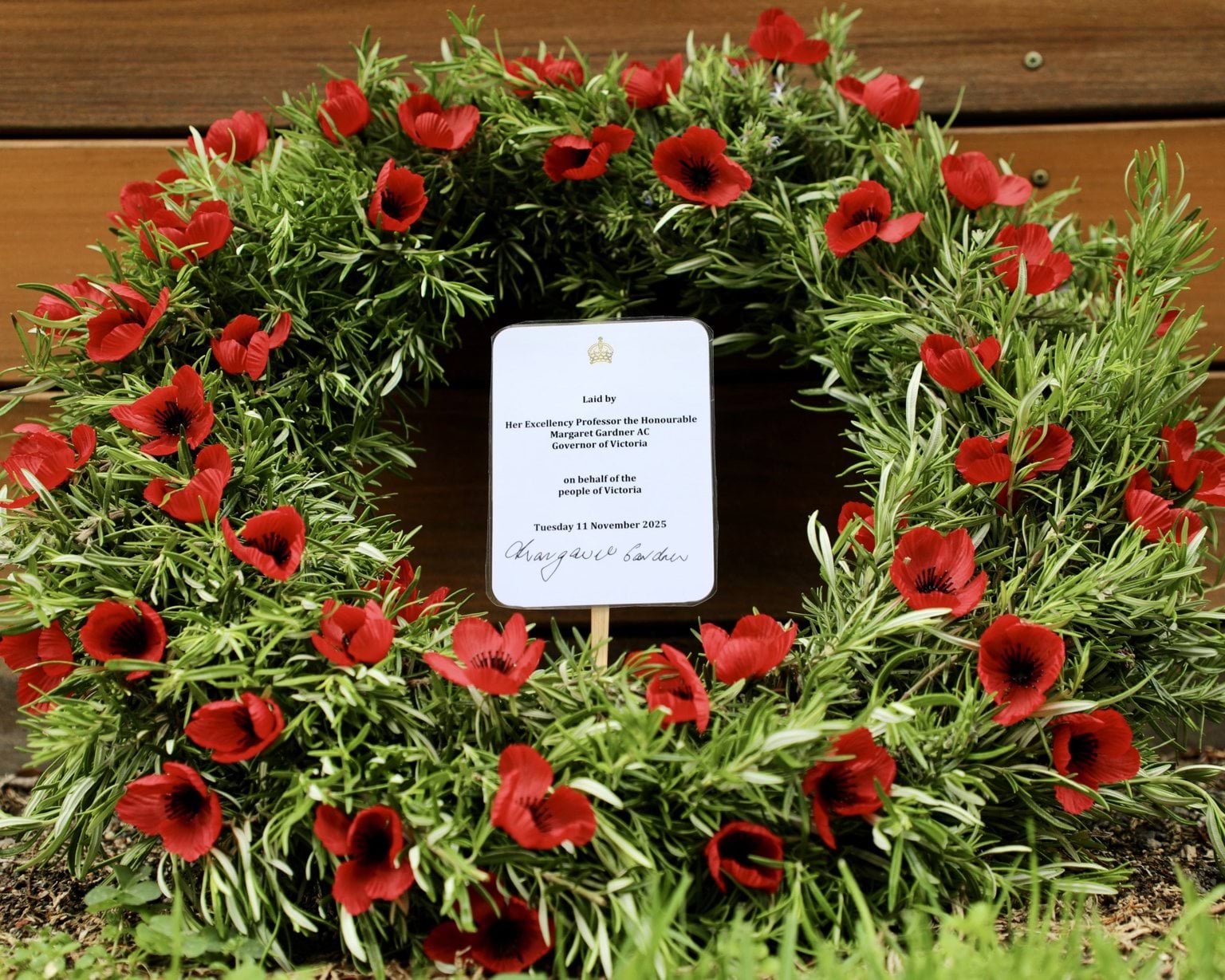- Published:
- Tuesday 11 November 2025 at 6:01 pm

I want to acknowledge the Traditional Owners of the land on which we are gathered – the Bunurong people of the Eastern Kulin Nation – and pay my respects to their Elders, past and present.
I also want to acknowledge past and present members of the Australian Defence Force with us today. Thank you for your service.
Remembrance Day is a moment of national ceremony.
It is a day when we share a minute of silence to mark the Armistice – the moment the guns fell silent on the eleventh hour of the eleventh day of the eleventh month of 1918.
But that shared silence is about more than the end of World War One.
Much more.
That silence also commemorates the 103,128 servicemen and women who have died in the service of our country – in all conflicts.
That silence is a moment for the nation to give collective thanks for the rights and freedoms we all enjoy – rights and freedoms made possible by the sacrifices of those who served.
That silence is a moment for national reflection.
With that in mind, I want to tell you a story.
Earlier this month, I met a friend and two of his mates at Government House.
These three men were friends – more like brothers – and their bond was created by a lottery.
You see, they met because they were among the 804,000 young men required to register for national service between 1964 and 1972.
During the Vietnam War, more than 63,000 of those men were conscripted via the birthday ballot – and on September 22, 1969, the birthdays of those three friends were pulled out of the barrel.
Their conscription letters gave them a choice: serve two years in prison or two years in the Army.
The three men chose the Army and turned up for training in January 1970 – where they became friends during the rigorous training to be infantry platoon commanders.
Seven months later, the three friends – who had been working as teachers in outback schools – graduated as infantry officers:
One became a platoon commander in a recruit training battalion;
One became an Army aviator;
And one served as an armoured cavalry officer in Vietnam.
One friend was sent to Vietnam. Two were not.
There is a representative equivalence in that equation – because more than 19,000 ‘nashos’, roughly one-in-three of the conscripts, were sent to Vietnam.
And, of those sent to Vietnam, more than 1,200 became casualties.
Another 200 of those young Australian conscripts never returned home – accounting for 40 per cent of Australian fatalities in Vietnam.
As I said, Remembrance Day is for all of those who served – not just World War One.
But, given that this year marks the 50th anniversary of the fall of Saigon, I want to take this opportunity to acknowledge the Australians who were on the ground in those final, chaotic days, including …
The hundreds of RAAF personnel in Detachment S who evacuated thousands of refugees to safety;
The two humanitarian volunteers – Margaret Moses and Lee Makk – who were killed when a US military transport carrying orphans crashed landed in Saigon;
The four RAAF guards – Mick Sheean, Trevor Nye, John Hansen and Ian Dainer – who were left on the tarmac when the last scheduled Australian plane departed;
And Brigadier Ted Serong – who stayed behind to rally South Vietnamese forces – and became the last Australian officer to leave Vietnam.
One of the RAAF guards left behind in Saigon, Trevor Nye, said the four men had ‘four pistols and four rounds each … no food, no water, no communication … We had a couple of smokes.’
They were only rescued on Anzac Day 1975 when an Australian Hercules was diverted from Thailand.
A few days later, Saigon fell.
It is impossible to know what it felt like to be on the ground in the last days of Saigon – just as it is impossible to know what it felt like to be a combatant in places like Gallipoli, Beersheba, Villers-Bretonneux, Tobruk, Kokoda, Kapyong, Long Tan, Afghanistan or Iraq.
Perhaps that was why – when I met those three friends – I asked my friend the Vietnam veteran whether he had an abiding memory of war.
He answered me carefully.
He told me that war brings out the best and worst of men.
He told me that a price is paid when a young man is given a gun and commanded to kill other men.
That price, he told me, is etched into the soul of each man – and can never be fully erased or repaired.
That is why, he said, veterans – especially young veterans who served in Afghanistan and Iraq – need the love and support of the nation they served.
And that is why, he added, the families of veterans need our love and support, too.
For me, those carefully chosen words go to the heart of the matter of Remembrance Day:
We are here not to glorify war, but honour those who, on our behalf, faced its horrors;
We are here, as fellow citizens, to personify the love and support of the nation;
And we are here to ensure the price they paid is forever remembered.
Lest we forget.
Updated

